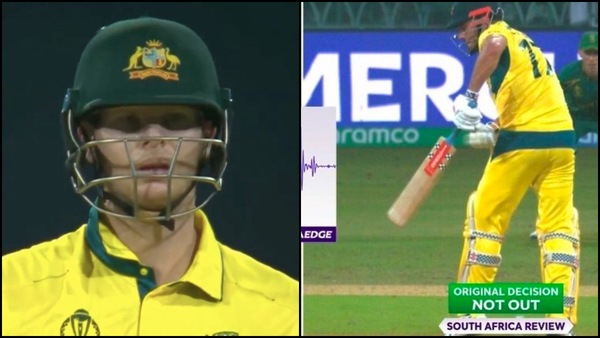ODI World Cup: Has Australia been subjected to controversial umpiring decisions vs South Africa?
The Australian batters were left bewildered by a series of umpiring decisions that went against them.

Last Updated: 08.11 PM, Oct 12, 2023
In the 10th match of the ICC Men's ODI World Cup 2023, Australia found themselves facing the challenging task of chasing down South Africa's total of 311 runs at the Bharat Ratna Shri Atal Bihari Vajpayee Ekana Cricket Stadium in Lucknow. However, the Australian batters were left bewildered by a series of umpiring decisions that went against them.
The first controversial decision occurred when Steve Smith came in to bat following the early dismissal of Mitchell Marsh (7). Kagiso Rabada was delivering a fine spell, and an LBW appeal was made against Smith. As the in-swinging short-of-a-length delivery missed Smith's bat, he immediately indicated that the ball had passed outside the leg stump.
In contrast, Quinton de Kock displayed strong confidence, and the South African captain, Temba Bavuma, opted to review the decision. No evidence of bat involvement was found, and ball-tracking indicated that the delivery would have struck the leg stump. This turn of events caught everyone off guard, as the initial perception was that the ball might have missed the leg stump. However, the HawkEye technology displayed the stumps being struck, showing three reds and definitively dismissing any notion of an umpire's call. Smith appeared taken aback, while the South African team was already in celebration mode.
The second controversial moment unfolded when Marcus Stoinis, who had only managed 5 runs, became the victim of Rabada's bowling once again. After a catch was taken by de Kock, the Proteas believed it was a wicket, but the wicketkeeper was not entirely convinced. Despite the uncertainty, they decided to review the decision for a caught-behind dismissal.
The catch was seemingly clean, but the critical question was whether the ball had made contact with the bat or glove. The replays indicated that Stoinis may have gloved the ball, especially when his hand detached from the bat. However, the top hand seemed to be in contact with the bottom hand, which was the third umpire's rationale for giving it out. Alternative camera angles from square leg suggested that the bottom hand was indeed separated from the top hand. Stoinis was clearly frustrated with the decision and contended that his hand was away from the bat, but the decision stood.
As of the time of writing this article, Australia had faced 22 overs and had already lost 6 wickets with just 87 runs on the board. Chasing South Africa's formidable total of 311 runs in 50 overs was proving to be a daunting task.

 Premium
Premium